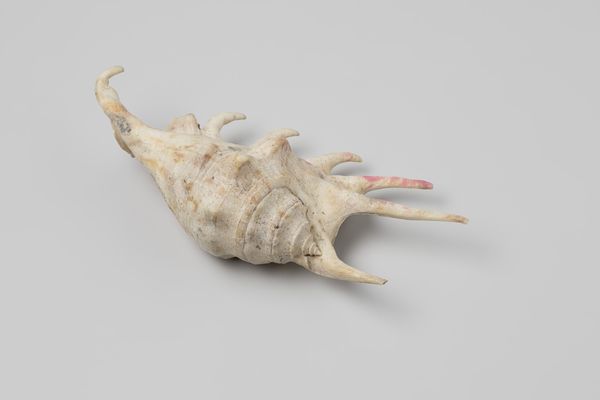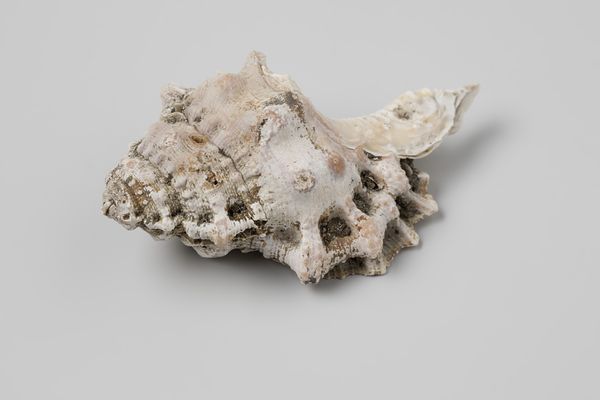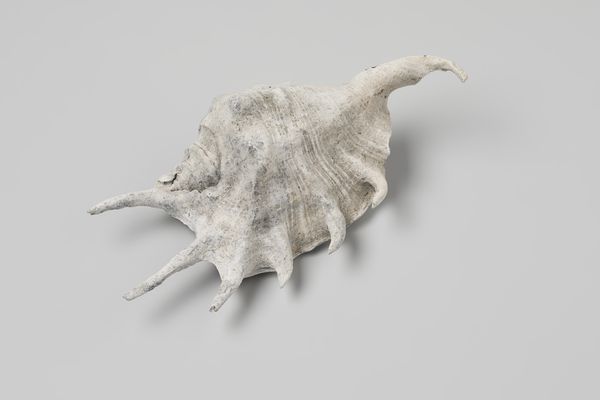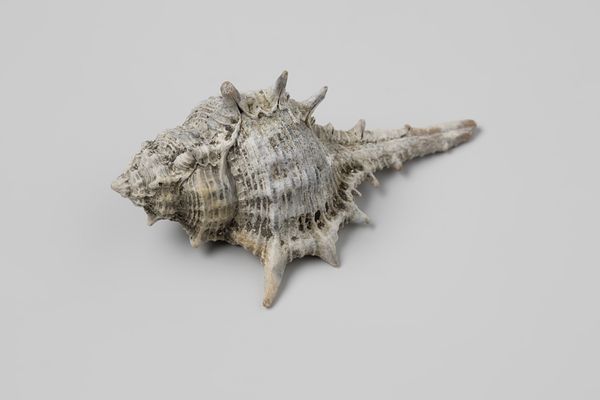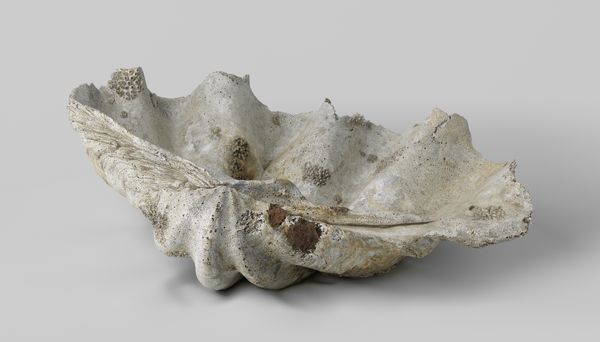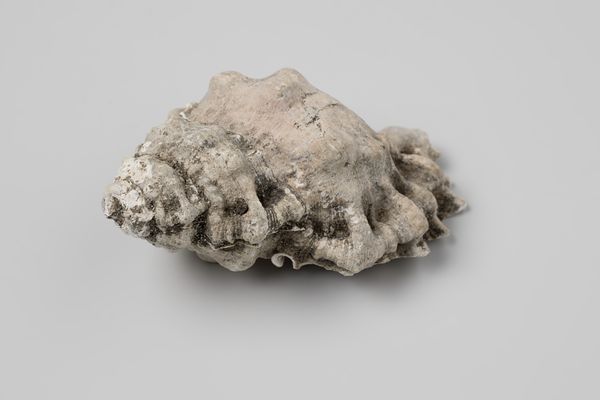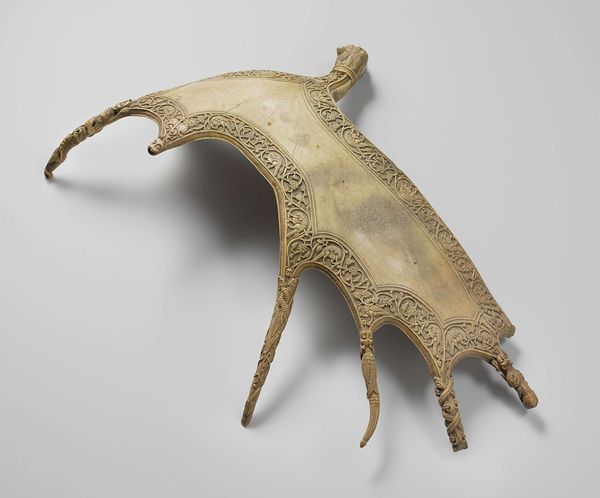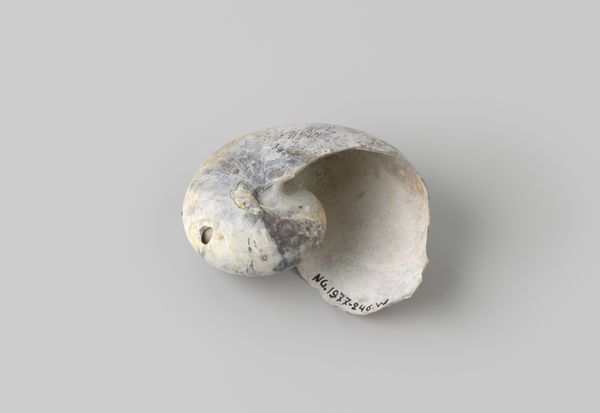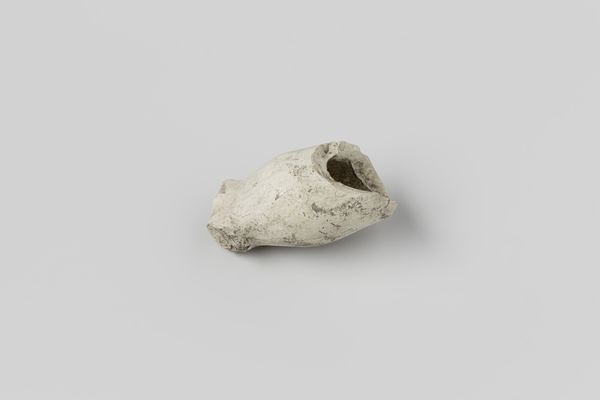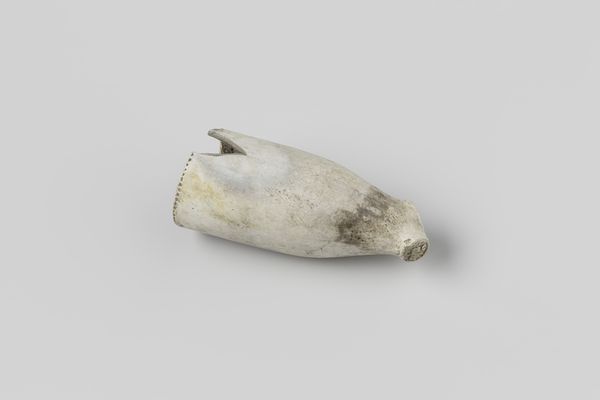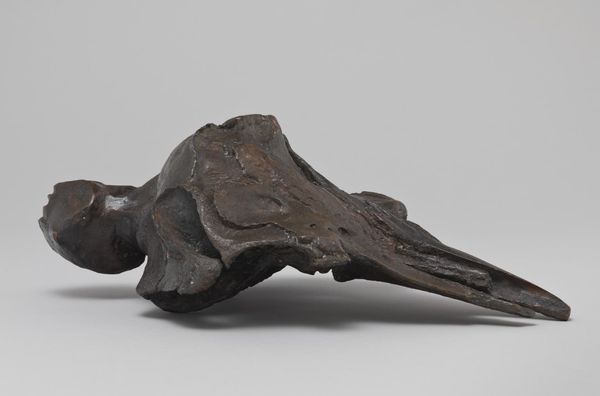
Lambis lambis shell from the wreck of the Dutch East India ship Witte Leeuw before 1613
0:00
0:00
found-object, sculpture
#
organic
#
found-object
#
sculpture
Dimensions: length 12.9 cm, width 8 cm, height 5.2 cm
Copyright: Rijks Museum: Open Domain
Curator: Here we have what remains of a Lambis lambis shell, recovered from the wreckage of the Dutch East India ship Witte Leeuw. This particular specimen predates 1613. Editor: It’s striking, almost skeletal. I’m drawn to its bleached, almost fragile appearance, yet those sharp projections suggest an incredible resilience. It feels very much like a relic, imbued with loss and forgotten history. Curator: Indeed. Recovered from a ship that sank due to conflict with the Portuguese, the shell stands as an inadvertent monument to Dutch expansionist ambitions and colonial rivalries in the East. These maritime conflicts underpinned the trade routes for spices, textiles and unfortunately, enslaved people. Editor: So this wasn't just cargo, but evidence of human exploitation and struggle… Does the shell’s fragility speak to the human cost of empire, highlighting the impermanence of power gained through oppression? The very structure almost appears defensive. Curator: Perhaps. In the 17th century, shells like these were considered exotic curiosities and often made their way into cabinets of wonders— status symbols of wealth and global reach. But the journey the Witte Leeuw took, represents not a benign trade, but rather violent competition and the ruthless pursuit of economic gain. Editor: Seeing it as a found object reshaped by history—damaged and imperfect—I wonder if it unconsciously undermines the idea of pristine imperial success, exposing the fractures within that narrative. Curator: A fitting interpretation. Shells held significant cultural meanings too; some indigenous cultures see shells as powerful spiritual objects. How ironic then that its symbolism here is wrapped up in Western materialistic and colonial objectives. Editor: This once living being then becomes collateral, another object absorbed into a capitalist framework that ultimately led to the destruction of the Witte Leeuw. Thanks for helping me connect with the layered story contained within this unassuming Lambis lambis shell. Curator: It serves as a powerful reminder that even the most unassuming objects hold silent witness to pivotal moments in history, reflecting on themes of exploration, conflict, and the interconnectedness of our world.
Comments
No comments
Be the first to comment and join the conversation on the ultimate creative platform.

